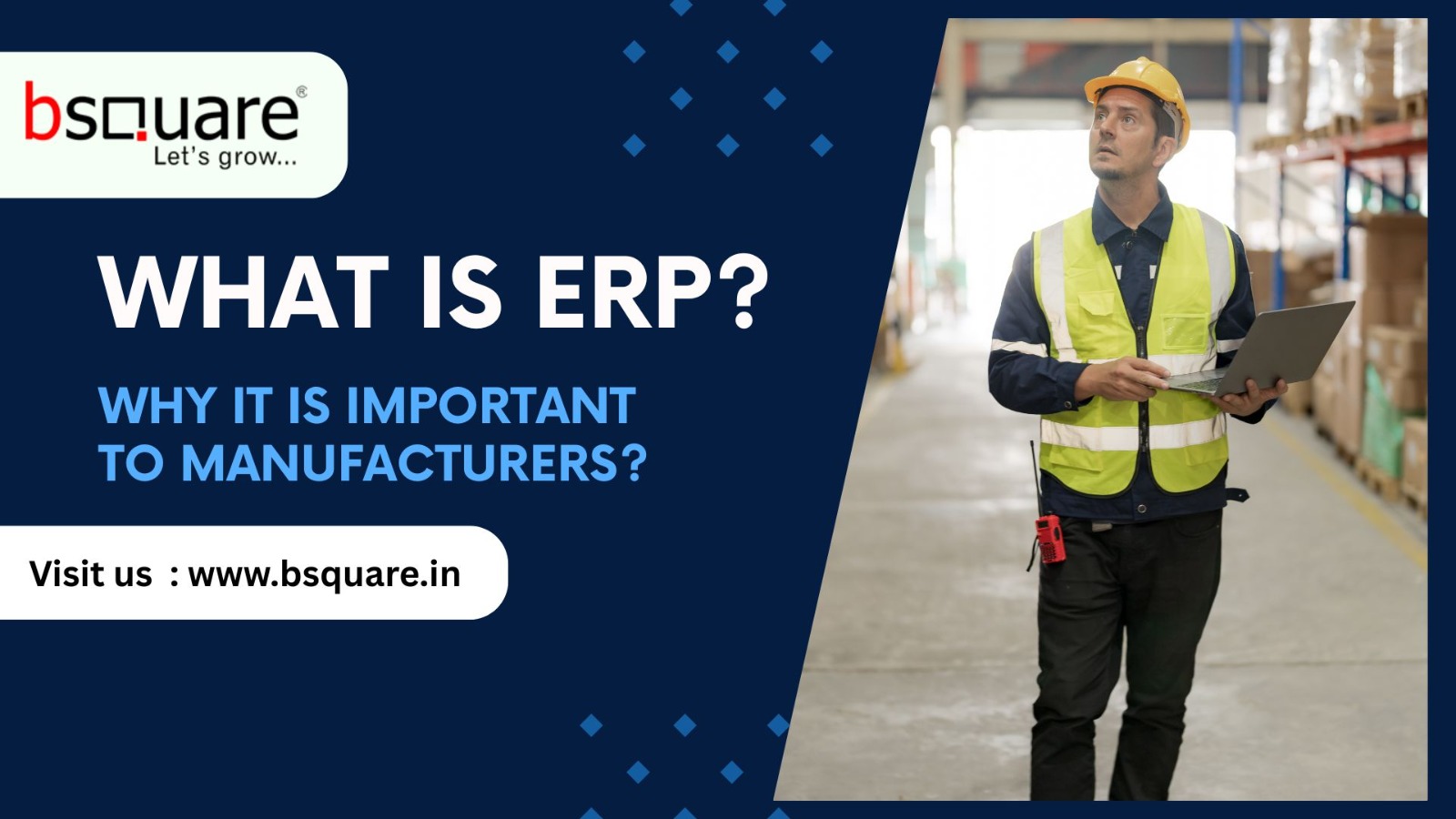What is ERP and Why It’s Key to Success in Today’s Manufacturing
To most, ERP is another IT fad, yet Enterprise Resource Planning is one system that consolidates all the necessary functions of a factory production, inventory, finance, human resources for dozens of other activities under one umbrella. To factory proprietors, having it all under one roof means fewer if not no mistakes due to miscommunication, faster decision-making, and faster response to shifting production conditions.
Imagine it: The purchasing staff, the machinists, and the shipping staff all access the same common data instead of separate spreadsheets. With the right ERP system in place, a supervisor can track arriving supplies, be aware of production slowdowns occurring, and track customer orders in real time.
Small manufacturing companies gain a lot from such consolidation eradication of lost hours and easier control of inventory levels. Customers gain too, especially when delivery schedules are guaranteed.
Why It’s More Important Than Ever Now:
- Raw material price volatility demands leaner inventory management.
- Supply chain disruptions make the point of having access to business in real time.
- Increasing compliance needs cannot be adequately addressed by manual techniques.
These are only some of the primary reasons why most producers are implementing industry-specific ERP software appropriate for their operations.
Overcoming Common ERP Implementation Challenges in Manufacturing
Ways to Torch Through Most Common ERP Implementation Mistakes in Manufacturing
Even with enhanced planning and preparation, ERP implementations in manufacturing fail—poor modules, concealed costs, or obstinate teams. Pressure is the most confined here with time-to-deliver constraints and cost sensitivity. A flavour here of common mistakes and how to do better at keeping away from them well.
1. Inflated Costs
Ad hoc additions such as custom screens, consultant time, and unnecessary training fuel costs to stratospheric levels well above originally planned.
Break Total Cost of Ownership (TCO) down into start-up, maintenance, growth, and indirect. Steer clear of customization and opt for cloud-based software with less precipitous cost curves.
2. Deployment Delays
Schedules and re-sent schedules might have the roll-out costing more than planned.
Develop a complete implementation plan, stake appropriately, and pilot sooner in an effort to identify problems before they get too entrenched.
3. Resistance to Change
Employees will detest new systems as clunky.
Engage end users early, role-based training, and leverage internal champions to create trust and simplify migrations.
4. Legacy System Integration Issues
Legacy applications will likely be filled with interoperability problems.
Perform extensive background audit, choose ERP packages with very high integration capabilities, and employ middleware wherever feasible.
5. Security Issues
Information centralization is susceptible to cyber-attacks.
Choose platforms that contain adequate security controls, e.g., multi-factor authentication, access controls, and encryption
Best Practices for Manufacturing ERP Implementation and How Easy It Is with POTHERA
Top Best Practices in Manufacturing ERP Software Implementation and How Easy It Is with POTHERA
The developers get overwhelmed in the first step as they select and operate ERP software, but the well-thought-out process is completed in a flash of the eye. POTHERA ERP assists them by having easy-to-use aspects and professional guidance to install it effortlessly and achieve results more manageable.
Best Practices for Manufacturing ERP Success:
- Utilize Specific Goals: Utilize specific problems or backorders maintained, and have measurable goals.
- Engage Cross-Functional Members: Engage the manufacturing, finance, HR, and IT members at the very start to obtain the whole input and synchronized streamlining.
- Industry-Specific Packages: Select an ERP package having similar functionality to manufacturing such as bill of materials and production planning.
- Prioritize Data Accuracy: Sanitize and validate data before migration so defects that will impact reporting and decision-making do not slip in.
- Phased Rollout: Implement core modules initially and phase out complex functionality. It minimizes the risk element and allows teams to ease themselves in step-by-step.
- Training and Support Investment: Leverage role-based training and develop ERP champions department-wise to facilitate support.
- Periodic Review and Optimization: Periodic audits of system effectiveness, feedback gathering, and process optimization to maintain the success trajectory.
How POTHERA Manufacturing ERP Assures Your Success:
- Pre-Configured Rapid Prototyping
POTHERA combines pre-configured manufacturing planning, BOM, inventory, and work order modules with cost- and time-saving deployment. - Real-Time Business Intelligence
Combine departments into a single dashboard to have real-time access to activities and promote collaboration. - Smart Production Scheduling with Integrated MRP
Impose planned demands to reduce procurement and planning lead times for production and avoid overstocking and downtime. - Access On-the-Go
PO Morav mobile app enables managers to see workflows, approve work, and access data on the move. - Smart Reporting and Insights
Get live insights into most critical key performance indicators such as stock level and order fill rate using POTHERA package reports. - Safe, Scalable Cloud Infrastructure
POTHERA cloud solution offers data protection, software maintenance, and less IT headaches.
Streamline and Grow Your Business, Ready?
Book a POTHERA ERP Demo Today
ERP boost is triggered by process, people, and technology synchronization. POTHERA ERP vision and correct approach can enable manufacturers to unlock business and achieve sustainable and scalable growth.

